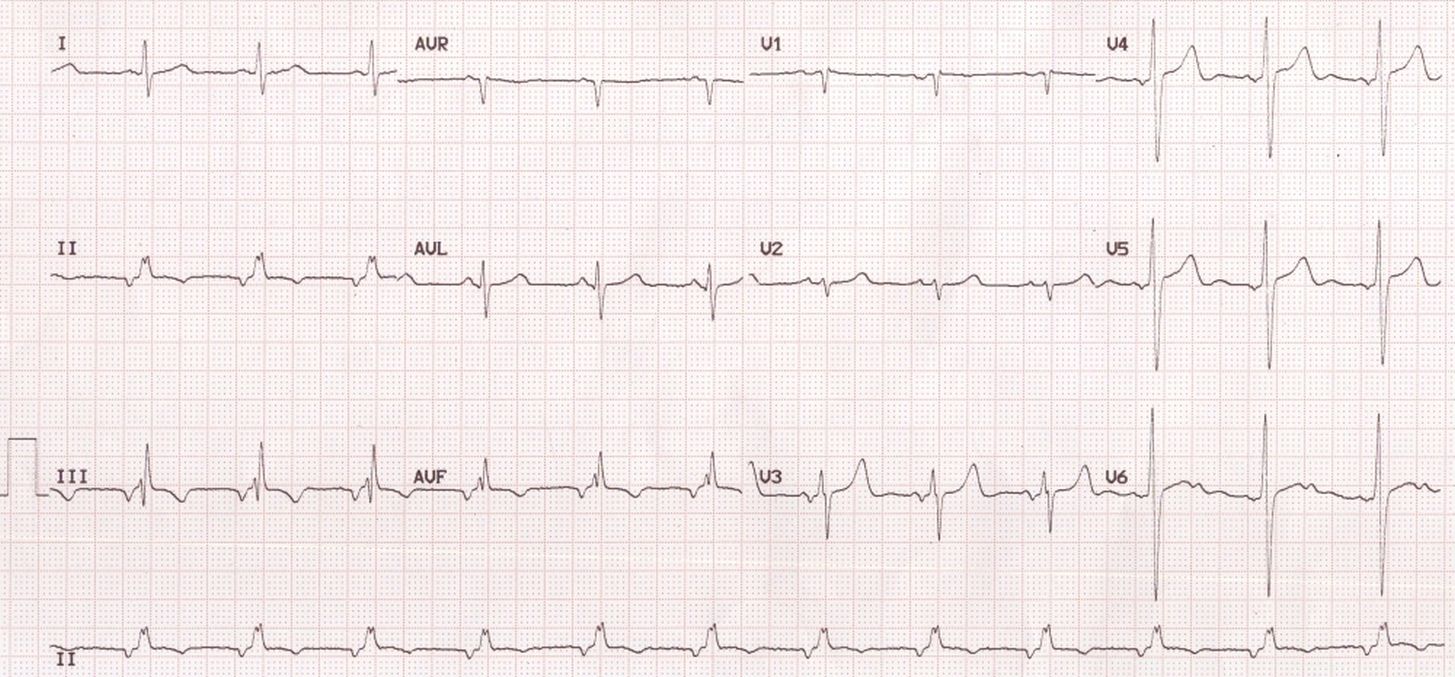Coronary sinus rhythm
Coronary sinus rhythm
Coronary sinus rhythm manifests with inverted P waves in inferior leads. One of the earliest references on coronary sinus rhythm was by Zahn A [1] as noted by Scherf D et al [2]. They described it as a rhythm with deeply inverted P waves in leads II and III with a normal or slightly shortened PR interval. The focus of origin was in the upper part of the AV node, which extends to the sinus of the coronary vein and hence the name. They found 31 cases over 6 years from a collection of over 23 thousand ECGS.
In the same article, Scherf D et al mentions that stimuli originating from the atrioventricular node produces three types of cardiac rhythms. When the focus is in the upper part of the AV node, there is normal or slightly shortened PR interval and it corresponds to the coronary sinus rhythm. When the focus is in the central part of the AV node, atria and ventricles contract simultaneously. When the focus is in the lower part of the AV node, atria are activated after the ventricles [2]. These rhythms are generally called high, mid and low junctional rhythms respectively.
Experimental coronary sinus rhythm was produced in humans by pacing the coronary sinus close to its os by Lancaster JF et al [3]. The paced P waves were inverted in inferior leads and PR interval was slightly lower than in sinus rhythm.
Lau SH et al also showed that pacing just within the os of coronary sinus can produce coronary sinus rhythm. They also had two cases of spontaneous coronary sinus rhythm [4]. P waves were inverted in inferior leads. PR interval during coronary sinus pacing was similar to control values.

It may be noted that the inverted P in lead III is sharp, as noted by Scherf D et al earlier [2]. The notched QRS complexes in inferior leads can be considered either as fragmented QRS or one resembling the crochetage sign in atrial septal defect. Coronary sinus rhythm can occur in sinus venosus type of interatrial communications due to defective sinus node.
References
- Zahn, A. Experimentelle Untersuchungen über Reizbildung und Reizleitung im Atrioventrikularknoten. Pflüger, Arch. 151, 247–278 (1913). https://doi.org/10.1007/BF01705202
- Scherf D, Harris R. Coronary sinus rhythm. Am Heart J. 1946 Oct;32(4):443-56.
- Lancaster JF, Leonard JJ, Leon DF, Kroetz FW, Shaver JA. The experimental production of coronary sinus rhythm in man. Am Heart J. 1965 Jul;70:89-93.
- Lau SH, Cohen SI, Stein E, Haft JI, Rosen KM, Damato AN. P waves and P loops in coronary sinus and left atrial rhythms. Am Heart J. 1970 Feb;79(2):201-14.


